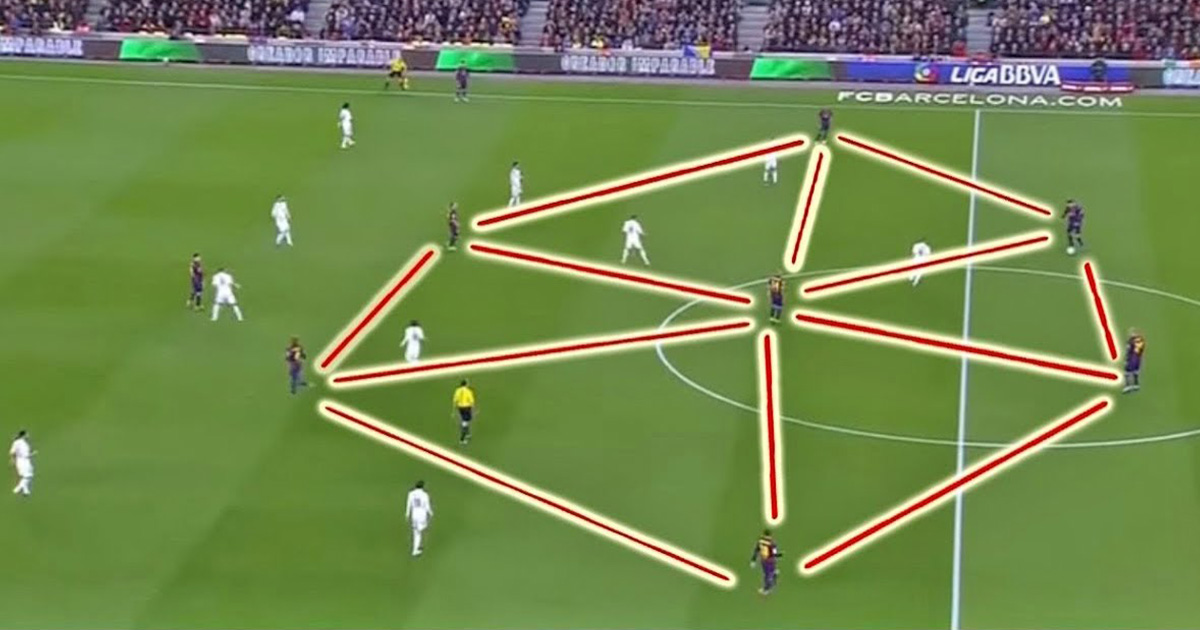When we were discussing art in class, sports being considered an art was brought up. That discussion got me thinking of soccer since I used to play a lot of it in the past, and it specifically made me think of team playstyles.
One of the most prominent team playstyles in the last couple of decades is called “Tiki Taka.” It is a possession-based style that relies on incredible amounts of coordination and skill from the players on the field to pull off. In this post I will attempt to explain the history and details of Tiki Taka, but if you want to see examples of it in use I found this video by ASCOMPS- Match Compilations on YouTube.
The concept for Tiki Taka began with the Dutch team Ajax and its coach Rinus Michels in the 1960s-70s. Michels innovated on a system called Total Football, where any player on the field was able to seamlessly transfer to any other player’s position, which lead to a more fluid version of soccer than what was being played at the time. His star player of this system, Johan Cruyff, later became the coach of FC Barcelona in Spain and continued teaching fluid possession-based play there. One of Cruyff’s players, named Pep Guardiola, became the coach of FC Barcelona through the late 2000’s-early 2010’s. His team became the first to use Tiki Taka as it is known today.

Now that we know the origins of Tiki Taka, let me explain how the system works. It is a possession-based playstyle, meaning that the central goal of the team is maintaining control of the ball and not letting their opponent steal it. Tiki Taka maintains possession in a unique way, where players will get very close to each other on the field and very quickly pass it to each other, often only touching the ball only once before passing it. The most effective way for players to pull this off is to group up in sets of three, which creates a “triangle” on the field as seen in the picture below. After the triangle is formed, players will almost constantly be moving when the don’t have the ball to make sure they are available for the player with the ball to pass to them. With the three players working as a single unit, the triangle will gradually move up the field.
There are a few requirements for a team to play Tiki Taka. First and foremost, every single player on the team has to be in incredible shape, even for a professional. Having to be constantly moving and making quick passes is very tiring, so players need to be able to keep up with the style’s fast pace. Secondly, and perhaps more importantly, the players have to be very technically good. Playing in tight spaces on a soccer field means the opposing team can have more players put pressure on the players with the ball, so the ones with the ball need to have good enough dribbling and passing skills to not make any mistakes under pressure. Pep Guardiola solved this problem by having the trio of Messi, Iniesta, and Xavi, who are known as three of the best technical players of all time, on his team.
So why use this style if it is so demanding? The answer to this question can be found in the stats: in the six season that Guardiola managed Barcelona, they won their league four times and came second the other two times (source). They also won the Champions League, the tournament for the top teams in Europe, three times out of six (source).
But why do I consider Tiki Taka an aesthetic? The first reason is that if sports can be considered an art form, then I believe a playstyle that a coach and team put months or years of effort into creating can be considered an aesthetic of the overall art form of its sport. Secondly, Tiki Taka is pleasing to look at when a team does it well. This can be seen by watching the video I linked in the second paragraph of this post.
Thank you for reading, if you have any questions about Tiki Taka I would be happy to answer them!


2 Comments. Leave new
I am also a big sports fan so I really appreciate you writing on the art that is hidden within sports. So much of sport requires planning, training, and most importantly execution. When there is literally a team of people, at a world class level, working collaboratively towards a common goal, surely their product is an act of expression. Beyond Soccer I think this can be found in many sports if you are engaged to view it in that manner, I think trick plays in American Football area good example, and so is a perfect Double Play in baseball.
Thanks for writing about this topic. Being an avid follower of soccer and Barça myself, I can say that you have discussed about all the important aspects of Tiki Taka. However, while discussing about the aesthetics of soccer, I feel that the Brazilian Joga Bonito is some thing that shouldn’t be missed out.